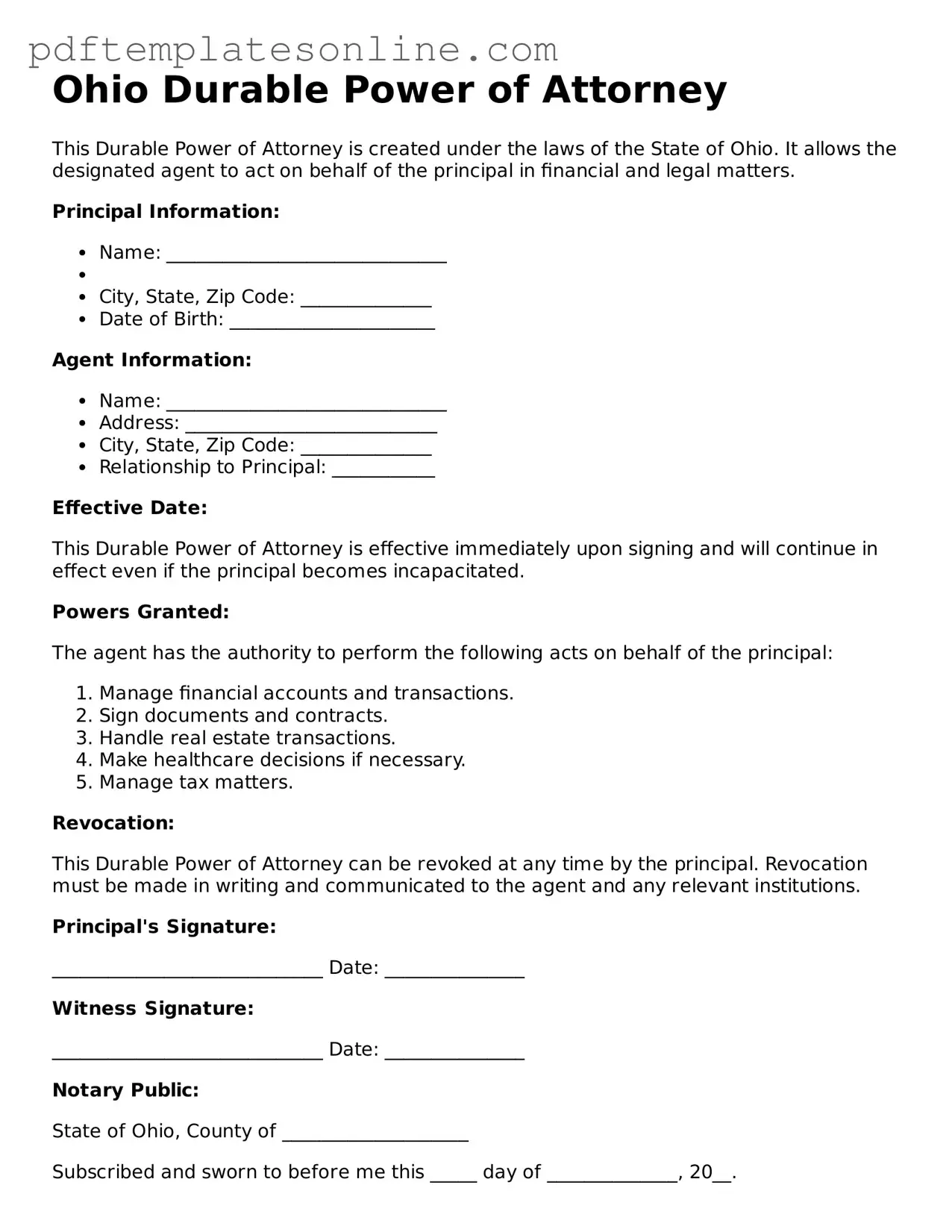Filling out a Durable Power of Attorney (DPOA) form in Ohio can be a straightforward process, but many people make common mistakes that can lead to complications down the line. One of the most frequent errors is failing to clearly identify the principal and the agent. The principal is the person granting authority, while the agent is the one receiving it. If their names or details are not accurately provided, it can create confusion about who is authorized to act on behalf of the principal.
Another common mistake is neglecting to specify the powers granted to the agent. The DPOA should clearly outline what decisions the agent can make, whether they pertain to financial matters, healthcare, or both. Omitting specific powers can limit the agent's ability to act effectively when needed.
Many individuals also forget to date the document. A DPOA without a date can lead to questions about its validity, especially if there are changes in circumstances or if the principal becomes incapacitated. It is essential to include the date to establish when the authority begins.
Not having witnesses or a notary public sign the document is another mistake that can invalidate the DPOA. Ohio law requires that the DPOA be signed in the presence of a notary or two witnesses. Skipping this step can render the document unenforceable.
Some people mistakenly believe that a DPOA remains effective even after the principal's death. However, this is not the case. A Durable Power of Attorney ceases to be effective once the principal passes away. Understanding this limitation is crucial for proper estate planning.
Another frequent oversight is failing to review the DPOA periodically. Life circumstances change, and so do relationships. Regularly reviewing and updating the document ensures that it reflects current wishes and appoints the right person to act on behalf of the principal.
It is also common to overlook the importance of discussing the DPOA with the chosen agent. The agent should be aware of their responsibilities and the principal's wishes. A lack of communication can lead to misunderstandings when the time comes for the agent to act.
Some individuals do not consider the implications of appointing more than one agent. While it is possible to name co-agents, doing so can complicate decision-making. If the agents disagree, it can lead to delays and conflicts that the principal likely wanted to avoid.
Another mistake is assuming that a DPOA is a one-size-fits-all document. Each situation is unique, and the powers granted should be tailored to fit the specific needs of the principal. Generic forms may not adequately address individual circumstances.
Finally, people often fail to keep copies of the DPOA in accessible locations. After completing the form, it should be stored safely but also be easy to find when needed. Ensuring that copies are available to the agent and relevant institutions can help avoid delays in decision-making.
